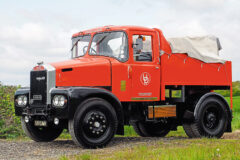Fine 1902 Fowler B5 returns home from New Zealand
Posted by Chris Graham on 5th July 2023
Paul Ritchie reports on the return from New Zealand of Matt Farwell’s 1902 Fowler B5 single-cylinder general purpose traction engine.
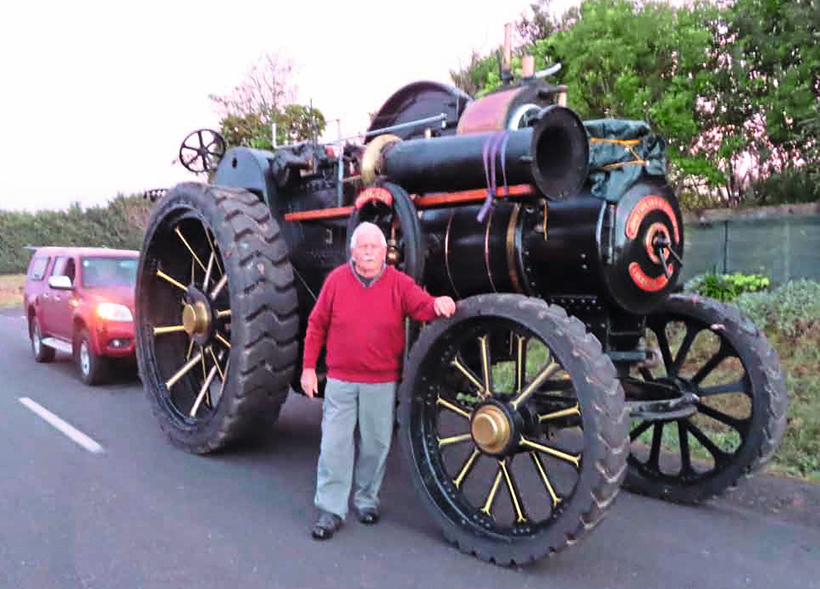
1902 Fowler B5 single-cylinder general purpose traction engine: Roy Sharman stands in front of No. 9173.
Built in 1902 at the John Fowler works in Leeds, it was sold new on 31 October 1902 to John Morris, a threshing and haulage contractor of Ashburton, New Zealand, through agents William Wood & Co to be used on saw mill and threshing duties. As well as dealing chiefly with the exportation of frozen meat, basils, salted pelts, New Zealand hemp, wool, tallow and cocksfoot, William Wood & Co. were the main agents for John Fowler in the Canterbury area of New Zealand, and were based in Hereford Street, Christchurch. Employing 30 men and operating out of four large wooden buildings, they dealt with Fowlers for both agricultural equipment and engines.
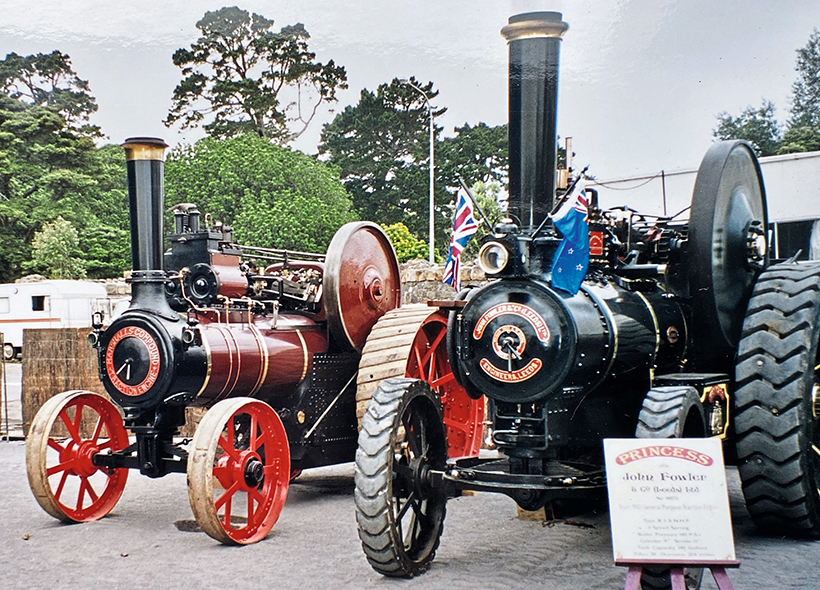
Roy’s two engines stand side-by-side, Fowler No. 9173 and Marshall No. 50670.
The engine was given the New Zealand boiler number of CY7408, with the order itself being slightly unusual in that it was a single-cylinder engine with three speeds, and on springs. The boiler has 39 tubes with a 2¼in diameter. The build sheets detail the specification, including ‘Sydney’ fittings of a water lifter with 26ft of suction hose, winding drum with 50 yards of 84-wire compound rope, side covers for motion work and a large headlight with an 8in lens instead of two small lights. The governors were described as Ref No.2 with 2.5/8” diameter pulley, and the paint detail was noted as black, picked out with amber and lined red and yellow.

The old tender is replaced as part of the works completed by Philip Franklyn during the 1980s.
On 11 November 1905 the engine was repossessed by Wood Bros. of Christchurch through their manager Robert Corson. It was then involved in a complicated legal dispute between Wood Bros, and William Harrison regarding a ploughing contract at Hackthorne which resulted in the engine being referred to in the Magistrates Court and reported in the 11 May 1906 issue of the Ashburton Guardian.

The belly tanks under construction.
In 1907 it was owned by Ellesmere Machinery Company of Leeston where it stayed until 1909 before spending a year with H N Cook, also of Leeston. The next couple of years of its history is unknown until in 1914 it went to Moore & McKay near Methven and was fitted with a crane for timber lifting and running a sawmill until 1920. It then spent the next few years until 1929 in the ownership of J Ross.

Side view of No. 9173 while owned in New Zealand by Roy Sharman.
No. 9173 ended its working life after WW2 as a sterilisation boiler for a large greenhouse in Harewood, Christchurch, where it is understood that it was largely complete, although the connecting rod and reversing rod had both been gas cut.
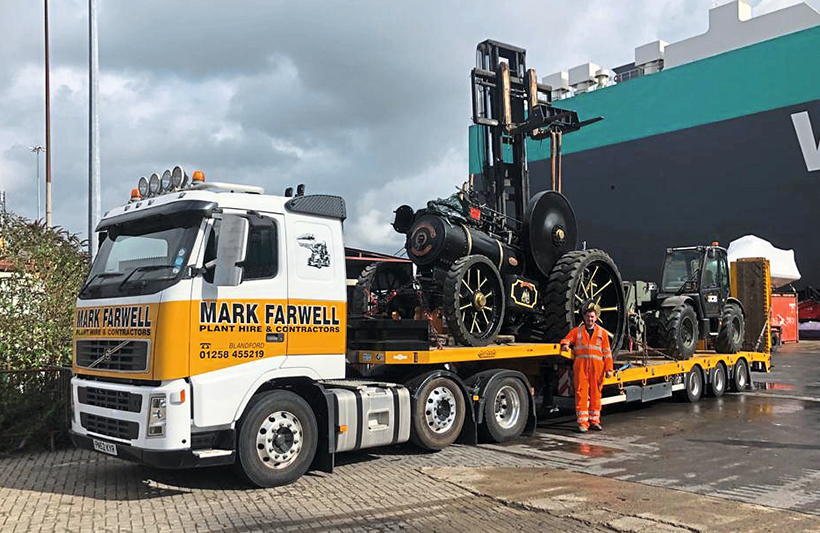
The loaded engine is ready for its move to its new home in Dorset, with a pleased Matt standing in front of it.
The engine and all parts were purchased by Phillip Franklyn in 1980s, who removed it from the glasshouse after dismantling much of it, and then using a crane to lift it out over the other buildings. The work that was then undertaken included the welding-up of the reversing and connecting rods, replacement of all the bronze bearings and bushes and a more aesthetic repair to the motion bracket as the previous one was thought to be not very attractive. Other work that was completed was the third shaft compensating gear bracket was replaced as the original was found to be broken.
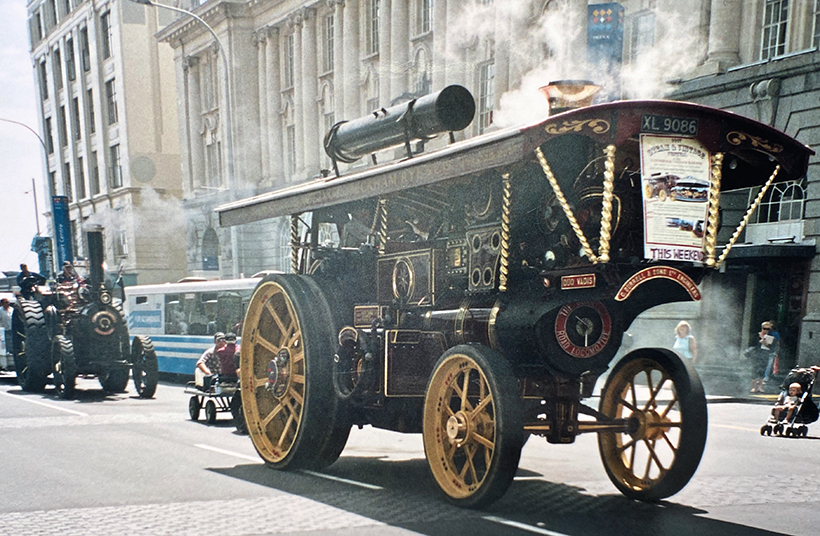
Quo Vadis leads No.9173 through the streets of Auckland, back in April 2007.
Welding work was completed to repair the front tubeplate (and also a number of rivets holding the front tubeplate were replaced due to corrosion as the chimney that extended through the roof had exposed the plate to moisture). More welding was done to repair around the check valve on the left-hand side of the outer firebox, and much of the tender was replaced due to age-related wear. Finally belly tanks were made and added, the steering modified around the belly tanks, rubber was fitted to the wheels and the engine was given the name Princess.

Captain Cook leaves The Churchill Arms in Fordingbridge in June 2022, on one of its first major road runs.
Roy Sharman purchased No. 9173 from Phil Franklyn in 1998 and it moved from the South Island to the North Island, to Auckland. Roy also owned 1908 6nhp three-speed double-crank compound Marshall No. 50670, and recorded every steaming of his engines. He exhibited the engine at many rallies and events including Glenbrook Railway steam festival, the Motat show, the Waikato festival , the Papakura Field Days and the Karaka show. It took part in the Auckland festival of Steam in 2007, and had the honour of parading behind visiting Burrell Quo Vadis through the main streets of the largest city of the Northern Island.
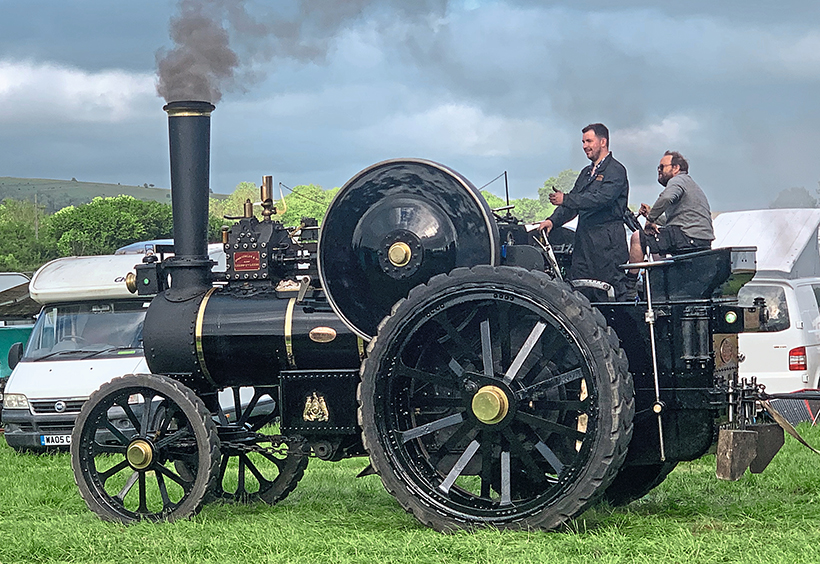
The Three Okefords Rally was one of the first public appearances back in the UK, and the new brake gear is clearly visible.
In 2021 it was granted an export permit and purchased by Matt Farwell having previously been advertised in Trade Me.
Shipping was then arranged and it loaded onto a bolster – a rack shipping container that can carry up to 30,000kg of cargo – with just the chimney removed and a sheet over the top. It was then loaded onto a container ship at Auckland docks called Tonsberg, a vessel 101 years younger than this special cargo! It departed on 12 July 2021 heading for Singapore through the Tasman Sea. At Singapore the Fowler was transferred onto a second ship called Theben, a Singapore-registered container ship, and then made its way to Southampton, completing its journey after a total of 11 weeks at sea.
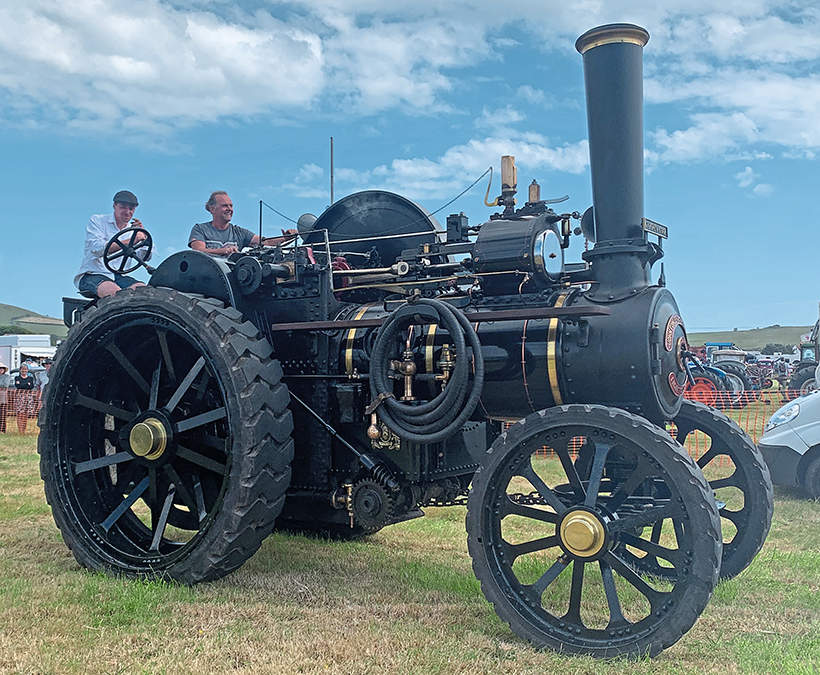
West Bay Rally saw Matt hand the reins over to Mike White and Joseph Hawkins, for a trip around the ring.
Matt collected it from Southampton docks on 28 September 2021 and this marked the engine’s first day back on British soil since its departure in 1902.
Once back at Matt’s yard No. 9173 was given a thorough check over and he then decided to light a fire and steam the engine for the first time on 2 October 2021. All went well, and No. 9173 moved under its own steam for the first time since 2010. The next stages were to obtain a full UK boiler certificate and start to list the various jobs that would need to be undertaken.

With Matt driving and his New Zealand-born wife, Lauren, steering, it’s a perfect match for an engine that spent its working life in New Zealand, and now finds itself back in the country that built it.
During the winter of 2021 Matt removed the lagging and prepared for, and completed, a hydraulic test with his boiler inspector, Dave Wothers. Both the pressure gauge and the water level gauges were replaced and the safety valves were rebuilt. Work on the chimney resulted in both a new base and a new chimney being made. The water injectors were refurbished and new injector pick-up pipes were installed, and of course a full repaint of the engine was undertaken.
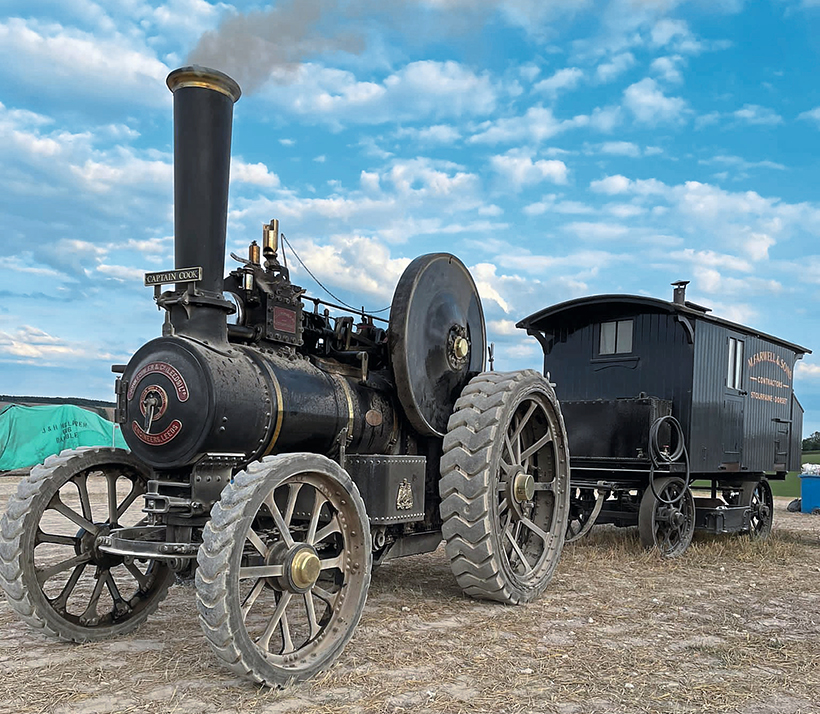
With the dust of the show evident, the road train prepares to leave the Great Dorset Steam Fair.
In the spring of 2022 Matt decided that he would fit a set of rear wheel rim brakes to the engine. These were manufactured by Alex Sharphouse at John Fowler & Co Leeds Ltd to the original Fowler drawings. These were not fitted to engines supplied to the Canterbury area of New Zealand as the ground is mostly flat, but Matt felt given the terrain of this country that they would be a sensible addition.
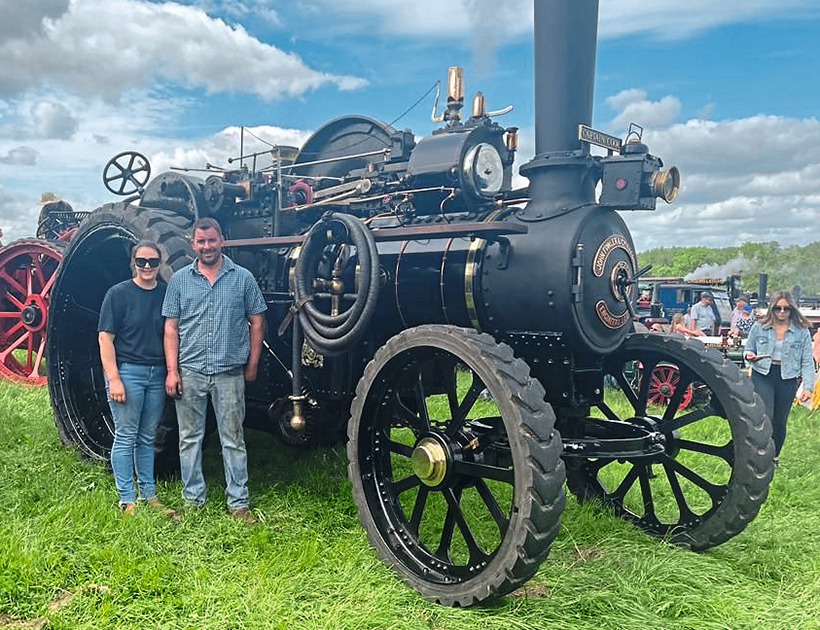
Kiwi and British; Lauren and Matt Farwell in front of their British-built but Kiwi-worked Fowler B5.
Matt has always been very conscious of the historical relevance of No. 9173 and its relationship with the country of New Zealand, and in honour of this he gave it the name Captain Cook with a nameplate being produced by Bridport Foundry. This is, of course, after Captain James Cook who, along with his crew were the first Europeans to set foot on New Zealand in 1769. Captain Cook left Yorkshire, travelled to New Zealand and returned, just like the engine has. Matt has himself lived in New Zealand for a period and his wife Lauren is from Christchurch, so in many respects it is most fitting that his engine should also be from New Zealand.
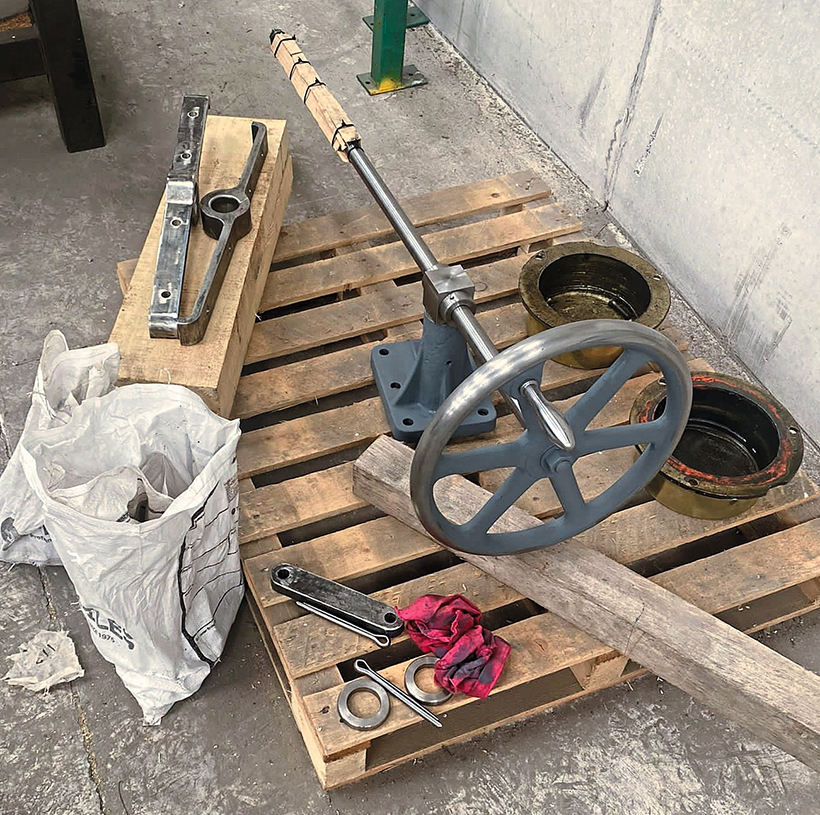
The brake gear prior to fitting.
During 2022, after some use Matt felt that the engine was not pulling as well as it should and was inefficient with coal and water. On removal he found that the slide valve had been replaced but not correctly machined which was soon rectified, and the engine’s performance was then very different! Over the summer of 2022 Captain Cook travelled over 100 miles on the road to various events in the south of England, and attended many steam rallies across Dorset including the Great Dorset Steam Fair.
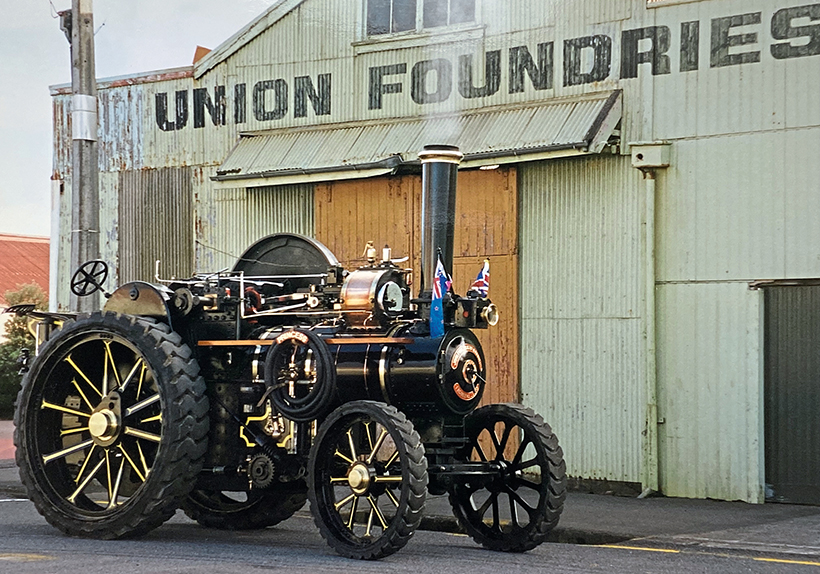
No. 9173 outside Union Foundries.
Future plans will see Matt and his engine out at many rallies and on road runs this year, and he also has plans to reinstate the governors to allow the engine to try out a saw bench. Matt is also very keen to find out more of the history of his engine and would welcome contact from anyone that might have information or photos relating to its life in New Zealand. Please do contact Matt via matt@farwellplanthire.co.uk.

Seen on the first day of the 2022 Great Dorset Steam Fair, Captain Cook tackling ‘Steamer Hill’. (Pic: Peter Love)
This feature comes from the latest issue of Old Glory, and you can get a money-saving subscription to this magazine simply by clicking HERE



